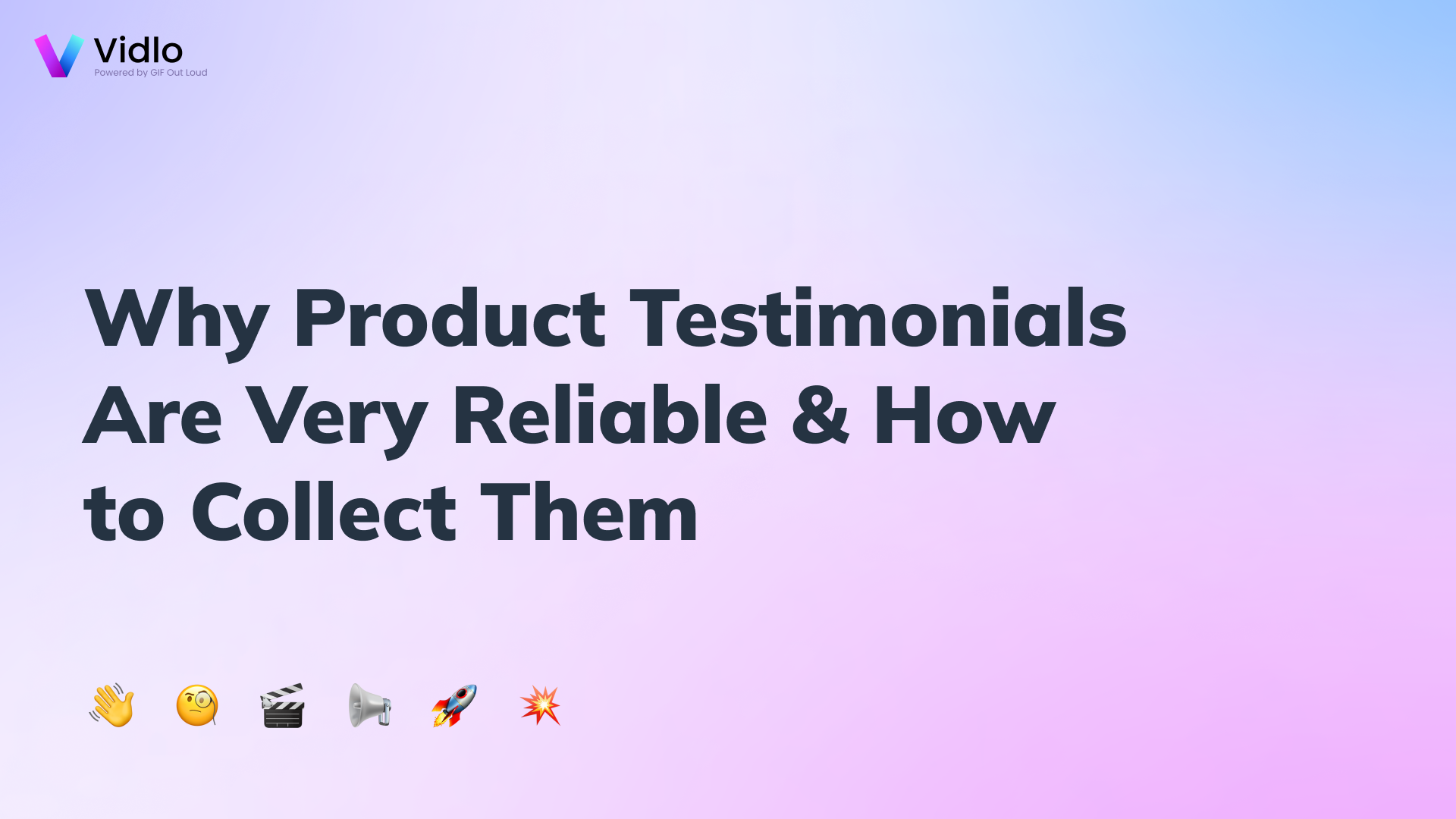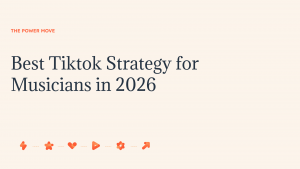If you haven’t noticed, shoppers today are flooded with options. With so many products, ads, and opinions out there, it’s hard to know who to trust. That’s why product testimonials have become such a powerful tool they cut through the noise and offer something real.
According to EveryoneSocial, 93% of people say user-generated content, like testimonials, helps them make buying decisions. And CrowdRiff found that 92% of consumers read reviews and testimonials before hitting “add to cart.”
If you want to use testimonials the right way, it starts with understanding why they’re so reliable—and how to collect them in a way that feels genuine and effortless.
Table of Contents
The Power of Product Testimonials Starts with the Right Tools
Let’s be real, asking customers to record a testimonial can feel awkward or complicated. But with the right tool, it doesn’t have to be. That’s where Vidlo comes in. It’s a super simple video testimonial software that makes collecting real, unscripted feedback easy for both you and your customers.
With Vidlo, you can:
1. Ask tailored questions so people know exactly what to talk about.
2. Let customers record from anywhere using just a link or QR code
3. Share those videos on your website, Instagram, TikTok, or email campaigns
4. Highlight real voices and stories that build trust and drive conversions
When you make it easy for people to share their experience, they will. And with tools like Vidlo, those genuine moments turn into powerful content that speaks louder than any ad ever could.
Real Customers Share Real Experiences
One of the biggest reasons product testimonials are very reliable is simple, they come straight from people who’ve actually used the product. There’s no script, no sales pitch, just real stories that future customers can connect with.
Unlike polished ads, user-generated testimonials feel honest and personal. They often include the little details that make a big difference, like how the product fit into someone’s daily routine or solved a real problem. That’s what builds trust.
In fact, 84% of people are more likely to trust a brand that includes UGC (user-generated content) in their marketing. When real people share real results, it’s way more convincing than anything a brand could say on its own.
Social Proof That Drives Action
Let’s face it—people trust what others say more than what brands say about themselves. That’s why showing customer testimonials on your product pages or social media can make such an impact. It’s powerful social proof that helps potential buyers feel more confident in their decisions.
Take this: websites with video testimonials see an average conversion rate boost of 80%. And when it comes to online reviews, 46% of consumers trust them as much as personal recommendations from friends and family. That’s serious influence.
Emotional Connections Over Anything
Product specs and features matter, but what really sticks with people is how a product makes them feel. When someone shares how a product helped them sleep better, feel more confident, or finally solve a frustrating problem, that story hits differently.
That’s what makes product testimonials so powerful they go beyond the technical and tap into real-life impact. These genuine, emotional stories often persuade potential customers more than any list of features ever could. When brands highlight these kinds of testimonials, they’re not just selling a product they’re building trust and emotional resonance that drives action.
Testimonials Are Everywhere and They Work
Think about the last time you bought something online. Chances are, you checked the reviews first. Whether it’s a tweet, a TikTok, or a five-star rating on a product page, testimonials are everywhere and people pay attention.
These real voices help future customers decide if your product is worth it. And when someone sees another person talking about how your product actually helped them, it creates instant trust. That’s why collecting and sharing these stories, especially as video testimonials, makes such a difference. It puts real faces and voices behind your brand and helps potential buyers picture themselves having the same great experience.
How to Collect Reliable Product Testimonials
Getting great product testimonials doesn’t have to be complicated, it just takes the right approach.
1. Make it easy with tools like Vidlo
Platforms like Vidlo’s video testimonial software take the stress out of collecting content. With a simple link or QR code, your customers can record and share their experience right from their phone—no tech headaches, no app downloads.
2. Ask the right questions
Instead of just saying “Tell us what you think,” prompt them with questions like “What problem did this product solve for you?” or “What made you choose us over others?” These kinds of prompts lead to real, useful stories.
3. Offer a little something in return
People are busy. A small thank-you, like a discount, gift card, or even just a shoutout can go a long way in motivating customers to share their experience.
4. Share it everywhere
Don’t let testimonials collect dust. Feature them on your website, in email newsletters, across social media, and even in ads. The more places they show up, the more trust you build.
5. Showcase different voices
Make sure you’re including stories from a variety of customers—different backgrounds, ages, and use cases. It helps new buyers see themselves in the story and proves your product has wide-reaching value.
At the end of the day, product testimonials are very reliable because they come straight from real people sharing real experiences. They’re not just marketing fluff—they’re proof that your product delivers. They help build trust, offer powerful social proof, and play a big role in what makes someone hit “buy.”
And the good news? Tools like Vidlo’s video testimonial software make it easy to capture those honest moments without all the back and forth. Whether you’re just getting started or want to level up your strategy, now’s the time to start gathering authentic, impactful testimonials.
Because nothing sells your product better than a happy customer telling their story.




